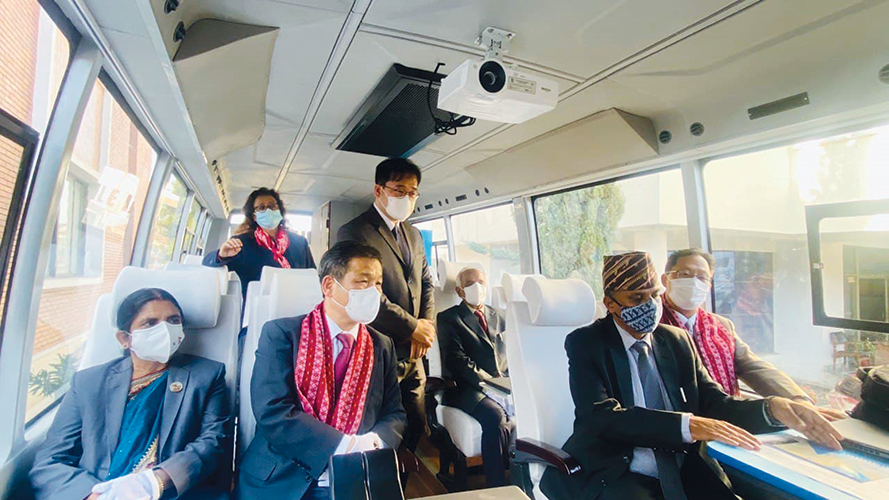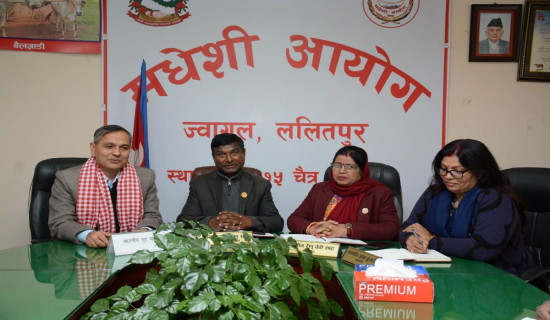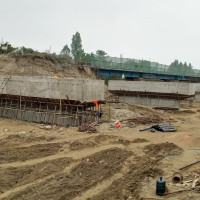- Thursday, 8 January 2026
NAST IT-bus to reach every district
Kathmandu, May 9: The Nepal Academy of Science and Technology (NAST) is planning to move the Mobile Information Access Centre (MIAC) for a month each to every district across the country.
The first-ever Mobile Information Access Centre available in the country is developed by the NAST with the support from the Korean government and launched at the CAN Infotech 2022, organised last month in Kathmandu. The facility is a mobile bus.
The technology bus will move to the districts especially in the rural areas to empower people with the training and hands on experience on the latest development of information and communication technology (ICT).
Dr. Rabindra Dhakal, Head of the Faculty of Technology at the NAST, said that the science body had already talked to four provinces – Sudurpaschim, Karnali, Gandaki and Lumbini and has received positive responses.
However, there is still a hesitation in the part of the subnational governments regarding the actual use and impact of the new facility. “Therefore, we want to develop it as a model project. Our collaborator South Korean IT agency also wishes the same. It’s a kind of test drive,” said Dr. Dhakal.
In the first phase, the NAST is planning to run a couple of test rounds of the facility in selected areas.
The IT bus was developed targeting the areas and groups that do not have access to information technology. The air-conditioned bus is equipped with WiFi, laptop, projector, screen, electronic podium, printer, visualizer, sound system, speaker and toilet, and can accommodate 18 individuals who can participate in a mini conference.
The IT-enabled bus is developed at a cost of Rs. 15 million of which about Rs. 7 million is invested in various ICT equipment installed in it. “It has all the facilities that an IT lab should have,” Dr. Dhakal informed. He maintained that in the first phase at least seven buses – one for each province - are required.
According to the NAST, the bus will be instrumental in connecting the young innovators across the country to a network called National Innovation Digital Network which is in implementation for a while. The network provides a facility to the innovators to create their accounts, maintain their profiles and create collaborations in their projects.
Dr. Dhakal stated that the NAST aims to reach the rural areas of the country by means of a mobile bus and help bridge the gap between the educated and the uneducated in the field of ICT.
Other objectives of the MIAC project is to increase IT awareness in marginalised communities, addressing techno-phobia in civil servants and teachers, and enhancing IT literacy. It will be used to conduct ICT trainings for civil servants, students, teachers and private sector employees. The facility has supporting aid for the disabled people.
Private sector companies also can hire the bus to train their employees and customers, and conduct other programmes. “We aim to organise joint
programmes with the private sector companies and local governments. ICT-based centre of excellence in the provinces will be mobilised in this task,” said Dr. Dhakal.
Earlier, CAN Federation, national organisation of ICT companies, entrepreneurs and experts, had said that it would work with the NAST in enhancing IT literacy, conducting training and increasing other programmes using the IT-bus.













-original-thumb.jpg)



